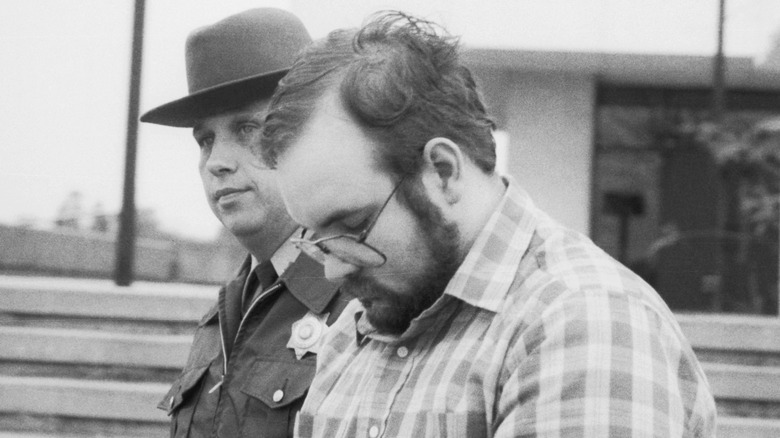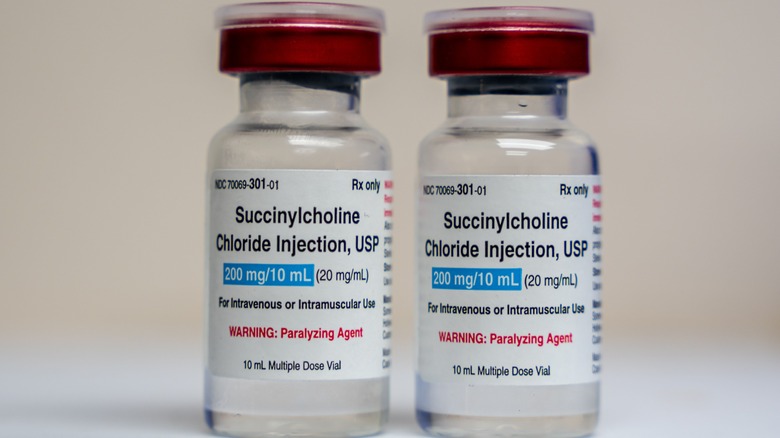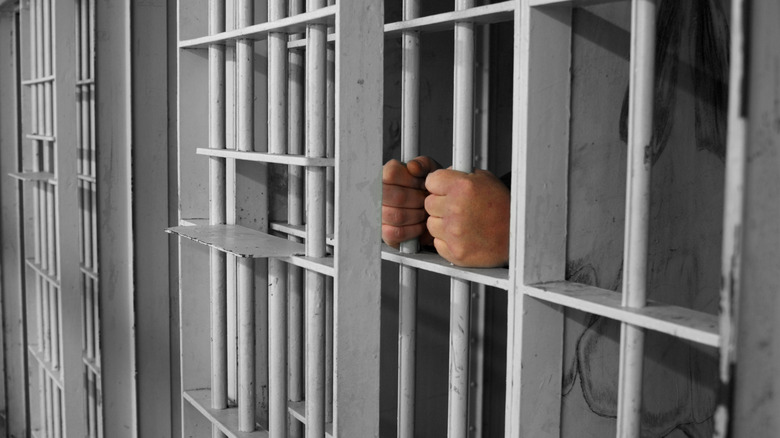Here's How Many Victims Serial Killer Richard Angelo May Have Had
According to Psychology Today, the common assumption that serial killers derive some form of pleasure from their crimes isn't usually the case. It's far more likely that they're driven by a fear of rejection borne of childhood abandonment and kill to drive away potentially painful relationships. An FBI report also examined anger, ideology, sex, psychosis, and the thrill of power as reasons why serial killers act the way they do. But not many such killers have claimed they wanted to masquerade as a hero, as Richard Angelo did.
In his capacity as a nurse at the Good Samaritan Hospital in West Islip, New York, Angelo poisoned scores of patients during the months he worked at the facility in 1987 before trying to revive them when they went into cardiac arrest (per The New York Times). According to Newsday, he first fell under suspicion in October 1987, and he faced a formal indictment the following January for one count of murder with three more pending. Per the Los Angeles Times, 33 patients who died during those months were exhumed as part of the investigation into Angelo's crimes.
Ultimately, six bodies were found to contain the drugs Angelo used to poison his victims. Guilty verdicts were handed down in 1989 in conjunction with four of those deaths on charges of second-degree murder, manslaughter, and criminally negligent homicide, plus assault charges for the nonlethal incident. Throughout the trial, Angelo's defense maintained that his grasp of reality was weak, and he didn't know the risks he was taking in trying to play hero.
Angelo targeted old, sick patients with relaxants
Per Newsday, all of Richard Angelo's victims were men above the age of 50, and four were over 70. That the patients were all middle-aged or older — each suffering from a different ailment and some from serious medical conditions — became part of Judge Alfred Tisch's commentary ahead of sentencing. "Was your conduct any less horrible merely because your patients were elderly?" he asked Angelo rhetorically (per Newsday). "No. You had no right to usurp God's function."
By his own confession and by the testimony of one surviving victim, Angelo would enter the rooms of his victims in his capacity as a nurse (per Newsday and The New York Times). He would then inject them with paralyzing drugs. He used Anectine and, primarily, Pavulon, both skeletal muscle relaxants used to help in inserting a tracheal tube. Administration requires trained professionals and tools for artificial respiration in case of a reaction, and the drugs can induce anaphylaxis.
Pavulon was the drug the authorities searched for when exhuming bodies in the Angelo case, and it was Pavulon the common link among those he was accused of assaulting or killing. Gerolamo Kuchich, the man who survived his attack, testified that he leaped out of bed after Angelo had injected him. Struggling to breathe, he called out to his family, fearing that they would think him a victim of a heart attack.
Angelo was given 50 to life for his crimes
Just 25 years old at the time of his crimes, Richard Angelo had a reputation as a good — if solitary — worker among his colleagues and former classmates and teachers. According to The New York Times, they were shocked when news broke late in 1987 that he had allegedly confessed to his crimes. He wasn't abandoned by either parent, and he briefly lived with them in Florida after college before returning to his native New York (per Newsday, his parents were present for the duration of his trial). In court, Angelo reportedly said little and showed almost no reaction, even when the verdicts were handed down.
The press, including the Daily News and The Evening News, took to calling Angelo the "Angel of Death" when the story of his crimes broke. The prosecution labeled him "a monster in nurse's whites," and distraught relatives shouted insults at him when the sentence was handed down (per Newsday). That sentence was 61.3 years to life, the maximum term possible. Under New York state law, however, Angelo is eligible for parole after 50 years. Sentenced in 1989, he will be 87 if he lives to see that day. Until then, he remains incarcerated in the Great Meadow Correctional Facility of Comstock, New York.


